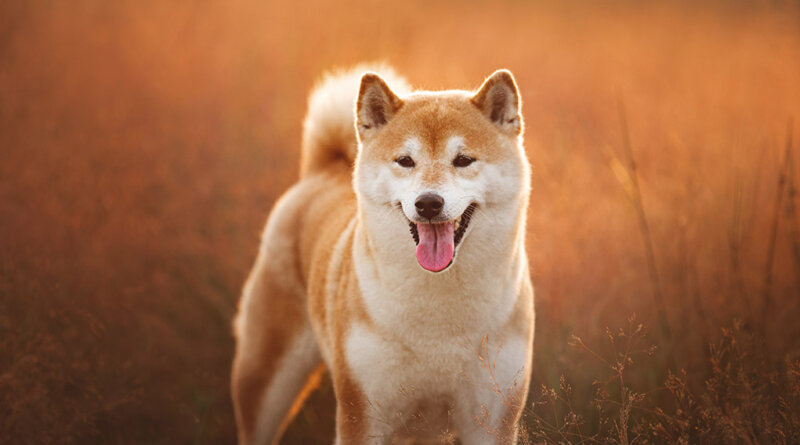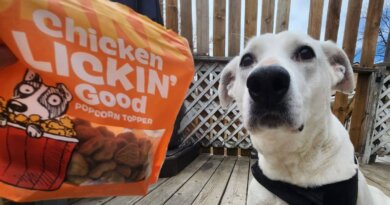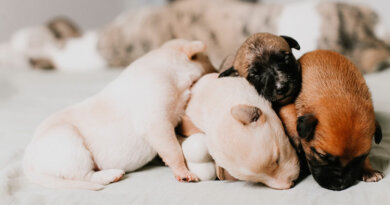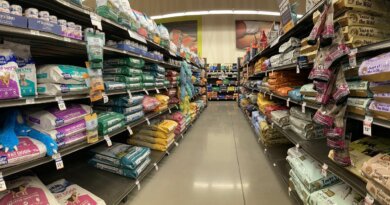Shiba Inu Dog Breed Profile – Top Dog Tips
Shiba Inu? Is that a dog? Yes. Having the personality of a cat but with a heart of a dog, they are the Shiba Inus.
This breed exudes a cat’s energy with its stubborn and seemingly indifferent nature but doesn’t worry. Shiba Inu just has a different love language.
On the other hand, Shiba Inu puppies are probably one of the cutest puppies that I’ve seen. They are like one big potato!
But before any of that, let’s take a look at their origin. Where did these cute potatoes come from?
History of the Shiba Inu Dog Breed
Shiba Inus have been around Japan for as long as 300 B.C They are known as one of Japan’s National Treasure of Dog Breeds. Shiba Inu has been Japan’s national treasure since 1938.
‘Shiba’ means Brushwood and ‘Inu’ means dogs. Their name was derived from the color or the texture of their coat.
Shiba Inu is the smallest dog breed compared to other Japanese dogs. They are known to hunt down bears, bores, and birds.
During the 1920s, European dog breeds conquered Japan, threatening the Shiba Inus pure breed. Shiba Inus became endangered at this time. Luckily ‘Nihinken-Hozonkai’ a Japanese Dog Preservation Society took action right away.
With the help of Ishi, a purebred Shiba Inu, he was able to return the purebred Shiba Inu with his litter breeding with a half Shiba Inu.
Sadly, Ishi was not able to return to Mr. Shimoya, his owner, and his hometown but what he had sacrificed has revived the security of the Shiba Inu breed. Now, Ishi has hundred of thousands of Shiba Inu carrying his bloodline.
Now Ishi has a statue in his hometown, Shimane, commemorating his sacrifice. Owners of Shiba Inus and supporters celebrate his birthday every year.
Shiba Inus are a highly intelligent breed. They are best for owners who have experience owning a dog before.
New owners may face difficulty controlling Shiba Inu’s stubborn personality and they may run the owners and the house down.
Let’s take a look at what a standard Shiba Inu looks like.
Physical Characteristics
As one of the most ancient breeds of the Japanese native breed of dogs, they are also the smallest in this category.
A Shiba Inu figure is compact but kinetic. They may be medium in size but their body is capable of venturing into mountains to animals.
Shiba Inus are originally hunting dogs but over time, they became non-sporting companion dogs.
One of the most prominent features of a Shiba Inus is its eyes. Compared to their wolf ancestor, they have more eye muscles which differentiate this Japanese breed from its ancestor.
Their expression should be amiable but confident. The eyes are shaped like a triangle and close to their nose bridge. Shiba Inus eyes are usually dark brownish and not completely black or brown.
Shiba Inu’s physical features are close to a fox as well, especially their ear shape. Their ears are like small triangles. It is straight on the inside but the outer appearance is rounded.
Shiba Inu’s head size and shape are moderate to their body. Also, their nose bridge and the muzzle are rounded but almost pointy at the end.
This dog breed has a nose that rises a bit higher than the nose bridge. They also have an aligned and tight bite.
Shiba Inus have a thick and average-length neck and their body is firm and muscly. Their neck and fore-chest are almost parallel to each other.
Their lower chest has a slight curve towards their hind legs. Shiba Inu’s back is straight towards its tail.
Another trademark is their curly tail. Shiba Inus have an arched tail. It gives a feather-like shape.
Their tail is usually thick. Shiba Inus have parallel and positioned fore legs while their hind legs are naturally wide and string.
Shiba Inu Coat
The Shiba Inus have a thick coat that can repel grime. They have a double coat with a coarse and thin outer coat while the inside coat is short, strong, and soft.
They usually come solid or with white markings. Shiba Inus can have a coat with black & tan, cream, red, and red sesame.
Size and Weight
Shiba Inus are relatively small compared to its other Japanese native breed. Male Shiba Inus can stand 14 ½ to 17 inches tall and may weigh up to 23 pounds.
On the other hand, female Shiba Inus can stand 13 ½ to 15 ½ inches and may weigh up to 17 pounds.
Temperament of a Shiba Inu
The Shiba Inu is one of the dog breeds having a personality that is not so much of a dog. Shiba Inu’s aloof personality may seem indifferent but they are one of the most tenacious breeds.
Doctor Takefumi Kikusui, a professor of Veterinary Medicine at Azabu University, Japan, has conducted an experiment determining a Shiba Inu’s temperament.
His experiment shows that older Shiba Inus may display distant companionship with their owners. They may not be as cuddly as other dogs but they are the type to keep close.
Shiba Inus are found to gaze at their owners as affection and assurance. They are found to display their affection for their owners less than European dog breeds.
Not to worry, these dogs are extremely tenacious with their owners. Their love language is just different from usual dog breeds. It’s just that Shiba Inu’s sense of independence is quite strong.
Shiba Inus are particularly territorial with other dogs, especially towards same-gender dogs with an alpha tendency. Alike, if owners can control and calm this down, they may be very obedient. Hence, dog owners should be firm and confident with this breed.
Shiba Inu’s additional trait is territorial or possessiveness with their space and belongings. They dislike it when dogs invade their space and sometimes even with their litter. This is especially with male Shiba Inus.
Also, Shiba Inu still inherits their hunting feature. Other small animals may not be the best present where Shiba Inus are.
It’s best to keep them on a leash when having outdoor walks. If not exposed early, they may pursue any small animals and it will be difficult to stop them.
RECOMMENDED: How to Train a Dog to Walk on a Leash
Living with a Shiba Inu
Shiba Inus are known in Japan as family dogs. They are very loyal to their owner or family.
As they get older, they may display less affection and touch to owners but they will keep a short distance between each other and stay close.
Shiba Inus are tolerable with children but only if they were socialized with children at a young age. Owners should make sure to supervise their dogs and never leave children unattended.
It’s also important for children to learn and understand how to treat a dog and what not to do with or around dogs. It goes for all breeds, not just Shiba Inu.
Shiba Inus are okay with strangers if their owners are present. If Shiba Inu grows up confident and secure, they will not display any sort of aggression toward strangers.
Furthermore, they can adapt well in terms of living conditions but these dogs are best living indoors. They may also live in apartments as long as they can release energy daily in exercise or training.
Shiba Inus can be left at home at a time but if they get bored and unstimulated for a long period, they may become destructive and chew on everything they see.
Shiba Inus are relatively quiet unless they are provoked or excited. Their bark is very high-pitched as well.
Shiba Inus are best in cool to the cold seasons but they also tolerate warmer seasons.
Their double coat will be shed during the warmer seasons, so keep in mind to brush their fur to avoid the house of pet hair.
Training a Shiba Inu
Shiba Inus are known for independence and intelligence. Owners need to be stern training this breed. They may brush off their owners if they seem like they aren’t serious with commands.
They are difficult to train especially when they become adults. So it’s best to teach train and socialize them while they’re young.
Slowly introduce children, small animals, outdoors, strangers, and different situations.
During this time, owners should show their leadership to this breed. As they grow older, they will see that you are their companion and leader.
It’s incredibly important to train them before getting them off the leash. This breed is amazingly intelligent and stubborn.
They will do absolutely what they want and when they want to. Shiba Inus will also run off to pursue whatever they see.
Training them with a long leash, treat, or even a whistle can help them recognize to return when they are called. Repeating this training with different scenarios may help them master this action.
Shiba Inus is also the type of breed that requires frequent mental stimulation. These dogs are smart working dogs but they may feel get destructive if they feel bored.
Training them with different exercises may help satisfy their boredom. Teaching them tricks, food puzzles, searching, and sniffing games is a great way to mentally stimulate them.
Exercise
Shiba Inus should be exposed to a good deal of outdoor exercise. They may be companion dogs but they thrive in the outdoors.
This dog breed may be calm and quiet indoors but if their requirement for exercise is not met, you should prepare for some chewing.
Shiba Inus should be exercised daily. At least an hour and a half of walks and sprinting may satisfy their needs.
They can also be taken out during running errands. After all, they have no problem accompanying you anywhere.
They can also travel with you but make sure they have been used to it since they were young. Any dog may react negatively to unexpected stimuli.
RECOMMENDED: Best Way To Travel with A Dog (A Video Guide)
Shiba Inu Health Care & Diet
Shiba Inus are relatively healthy. They are one of the healthiest breeds. Since 300 B.S, they have thrived and lived with us humans. Shiba Inus can live from12 to 16 years.
Sadly, improper and illegal breeding has brought inherited diseases and disorders. Some Shiba Inus have been a victim of this ruthless activity.
Remember that before getting a Shiba Inu or any other dog to adopt instead, or acquire one from a reputable breeder, those Shiba Inus should be checked for:
Allergies
Shiba Inus can develop skin allergies regardless of their age. It is usually in or around their ears, belly, folds of skin, and feet. Carefully look at a Shiba Inu if they have frequent licking or itching in these areas.
Lethargy, bald patches, and itchy runny eyes are also one of the symptoms.
This condition should be looked at attentively. If a Shiba Inu is diagnosed with a skin allergy, owners should prevent this condition to worsen.
If this condition lasts longer or increases over time, the dog may also acquire dermatitis.
Should you have the Shiba Inu checked with the veterinarian for medication or supplements needed for them?
Definitely! Go to the vet immediately and have it checked as soon as possible and regularly. Owners should also inquire their veterinarian about what causes the allergy and what foods or activities to avoid.
Eye Problems
Dog Cataracts
Cataracts are the obstruction of lens fiber in the lens of an eye. It’s the gradual clouding of the lens in the eyes.
Shiba Inus acquire this later in their life. It can also be acquired through genetics, traumatic injuries in the eyes, nutritional deficiencies, or diabetes.
Have the pet get an ophthalmic examination to detect small cataracts as early as they step four to five years old.
To determine whether it is blinding or not, it is better to check with the veterinarian to be informed what procedure should be done.
Glaucoma
Glaucoma is increased intraocular pressure inside the eyes. This condition is very painful and may spread quickly. It can damage the nerves and retina in the eyes.
If the Shiba Inu has a cloudy cornea, different size of pupils, nonreactive pupils to light, frequent squinting, and lethargy, you should have them checked as soon as possible.
Veterinarians may prescribe a medicine or lifelong maintenance if the dog is diagnosed. It’s best to have a Shiba Inu checked regularly to check if they have the condition.
Progressive Retinal Atrophy (PRA)
Progressive Retinal Atrophy is a degenerative disease that affects the rod and cone cells in the eyes that leading to blindness. It is an inherited disease and it’s known for it has no treatment. It can progress quickly from a year or two.
Since this condition is not painful, it may be hard to determine if the Shiba Inu has it. Symptoms may be night blindness, anxiety during nighttime or around dark areas, dilated pupils, eyes becoming reflective when light is shined, and suspiciously clumsy.
Have the Shiba Inu tested and checked with the veterinarian for the preventive measures during the early stages.
Sadly, it has no cure. The owner’s responsibility to help dogs with this condition is crucial for them to live a happy life.
Hip Dysplasia
Hip dysplasia is one of the most common hip problems in dogs. It is a genetic condition wherein the socket of the joint and ball becomes distorted.
Shiba Inus are prone to Hip Dysplasia. Due to their large stature, their mass stresses their lower body areas, especially in their joints.
When diagnosed with hip dysplasia, it’s important to keep their weight in the normal range and have them exercise with activities that promote joint therapy.
Veterinarians may prescribe medications for anti-inflammatory/ pain relievers and supplements.
Prevention is the same as keeping them active but not injuring them as well. A treadmill walk or swimming is perfect for prevention and recovery.
Hypothyroidism
Hypothyroidism is the inactive function of the thyroid gland where metabolism is slowed down. If diagnosed, the immune system attacks the thyroid gland as it does not recognize it. Usually, this is an inherited disorder.
If the Shiba Inu is experiencing lethargy, slow heart rate, weight gain, excessive shedding, and high cholesterol, it’s best to have them tested with the veterinarian.
If Shiba Inu is diagnosed with hypothyroidism, the veterinarian may provide maintenance and recommended diet.
It’s best to have this condition checked and addressed immediately.
Patellar Luxation
Patellar Luxation is when the patella shifts alignment out of the femur. This can range from high to low levels of luxation, and each requires different treatments.
Symptoms may include skipping and kicking off the leg. It’s best to consult with the veterinarian for treatments, therapies, or procedures required to help Shiba Inus with this condition.
Remember not to breed Shiba Inus who have these diseases. It’s best not to bring these despairing conditions to other dogs.
The Shiba Inus and Their Diet
Shiba Inus may be medium in size but some Shiba Inus may have the appetite of a large dog. Since Shiba Inus are active animals, they mostly break down their food quite quickly as well.
But it’s best to give Shiba Inu one cup of dry food of choice twice a day. Owners can also give different mixes in their diet.
Vegetables like broccoli, dehydrated tofu, or wet food can also be an option for their diet.
Watch out for foods that may cause them allergies as well. Consult with the veterinarian for further information regarding foods or supplements they mar or do not intake.
Shiba Inu Grooming
If you look at a Shiba Inu, their coat seems like a perfect rounded coat around their muscly body. That’s because Shiba Inu has a double coat.
This double coat doesn’t only look great but it also helps prevent grime and dirt from clinging to their fur.
Shiba Inus shed during warmer months and this is the time to groom them regularly. They may need daily brushing during their shedding season. But weekly brush can also help reduce your house of unwanted fur.
Shiba Inus should be bathed when necessary. To have a healthy coat, they should be brushed and bathed when necessary.
Bathing at least thrice or four times a month should be okay. If they have done outside activities, it’s best to bathe or at least wipe the grime on their coat.
Nail grooming can be a nightmare. Shiba Inus are known to be dramatic when it comes to nail trimming.
During nail trimming sessions, they will act as if you have stripped them of their doggy rights.
Holding their paws casually and trimming their nails while they’re young can be a good start to make them feel less threatened with nail clipping.
If you are comfortable you may do it the self but if you are afraid of not doing it properly, have a professional groomer do it instead.
If you are concerned about how sloppy the Shiba Inu could be, the good news is they are less likely to drool.
Frequently Asked Questions about The Shiba Inu Dog Breed
Are Shiba Inus aggressive?
Shiba Inus may seem aggressive but their owners may easily dismiss their behavior. It’s best to separate Shiba Inus if it makes the situation uncomfortable.
Shiba Inus are territorial with their space and belongings. If they feel like it is invaded, they may growl and bark at the perpetrator.
Are Shiba Inus hard to take care of?
Shiba Inus may be difficult to handle if you have no experience in handling dogs. They are a very intelligent breed and may brush you off if they sense your leadership is lacking.
But if the owner is firm and confident, Shiba Inus will look at their owners as their leaders. Shiba Inus are amazing companion dogs. As much as you take care of them, they will undoubtedly do the same.
Are Shiba Inus good family dogs?
Yes. Shiba Inus are known for being an amazing family dog. They are very tenacious creatures.
Shiba Inu may not seem as physically affectionate as other dogs but they will be close to their owners at a distance. They can accompany their family through their travels or errands as well.
Shiba Inu Dog Breed Profile Summary
Shiba Inus are the cats of the dog breed. Their seemingly indifferent personality and stubborn personality are just the beginning of wonders with this breed.
Shiba Inus require a great deal and a variety of experiences, and no doubt they’ll want to experience it with their owners.
If you plan to adopt or buy a Shiba Inu, make sure to research the breed first and adopt Shiba Inus from reputable breeders.
Remember to have your Shiba Inu checked regularly for any diseases they may have acquired or inherited. It’s best to address their condition as early as possible and prevent it to worsen.
If you are interested in adopting a Shiba Inu puppy, make sure to do it right! As pet owners, we should be responsible for our pet’s well-being. Try and look for the best breeder in your area.
Or you can adopt through a rescue group like the National Shiba Club of America Rescue.
RELATED: LHASA APSO DOG BREED PROFILE
Related











